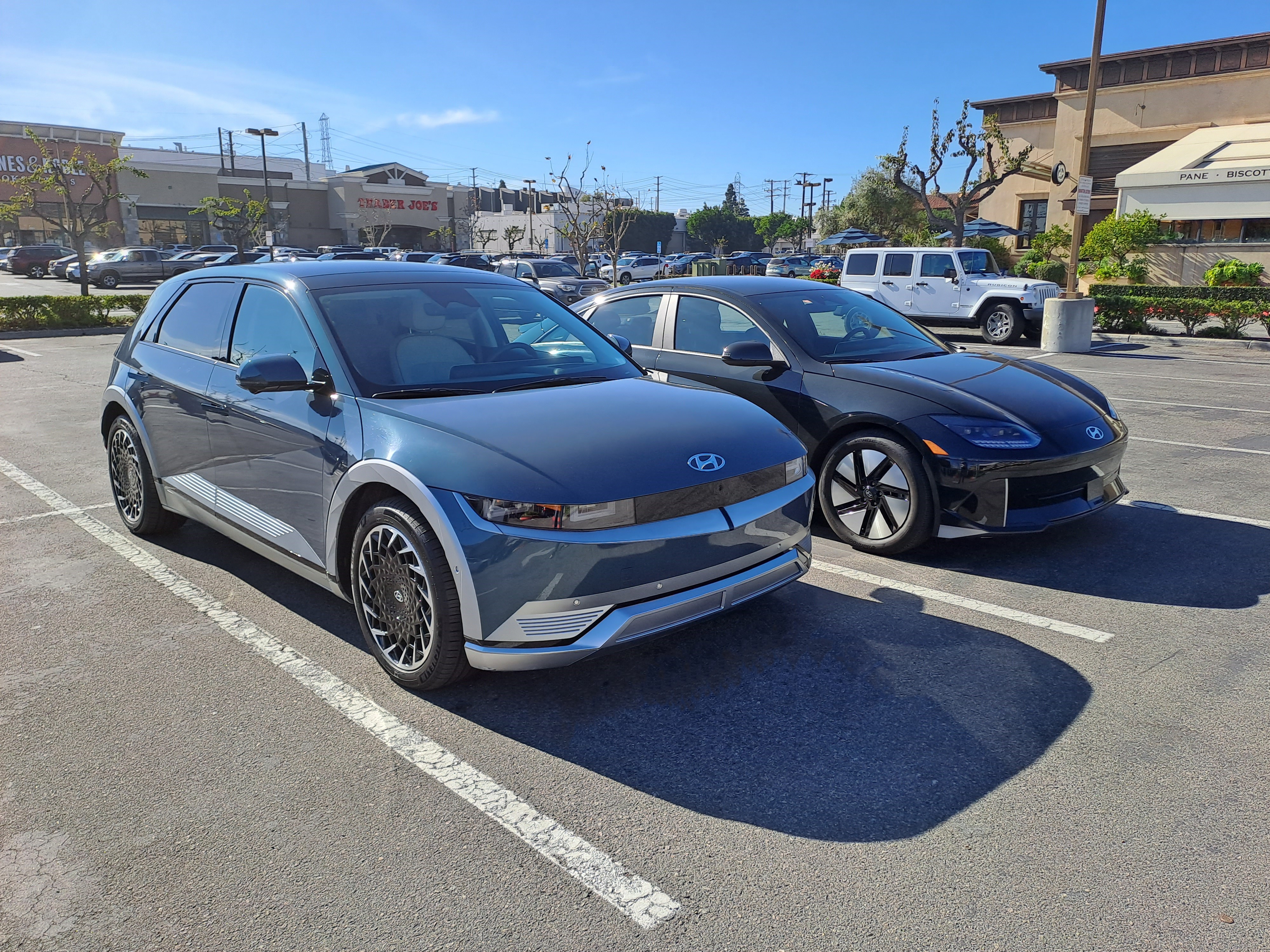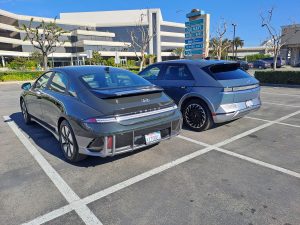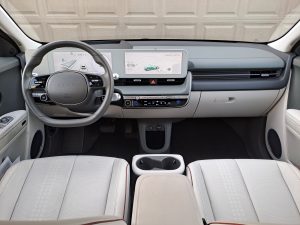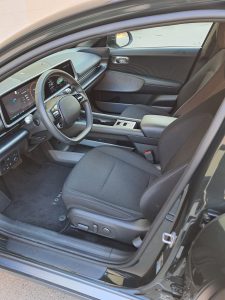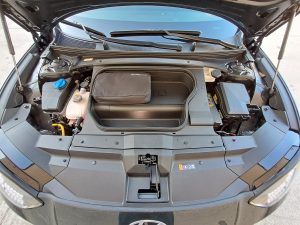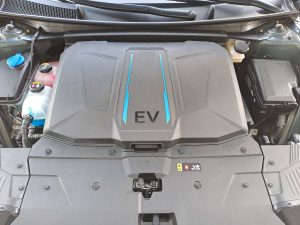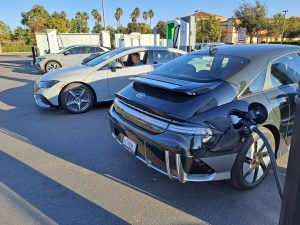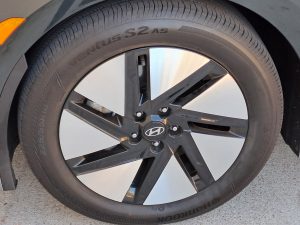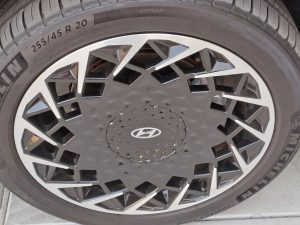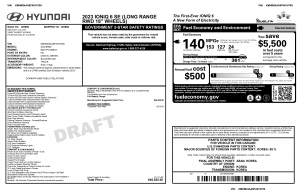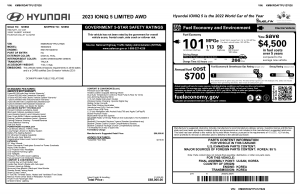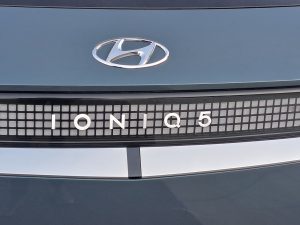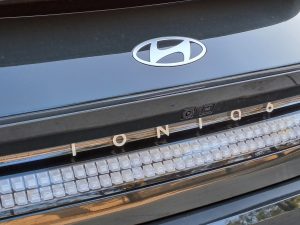Hyundai has quickly become one of the industry’s most major forces in the development and production of EVs. Two of its slicker offerings are the Ioniq 6 sedan and the Ioniq 5 four-door hatch (or demi SUV).
Both are based on much the same technical and engineering platforms, offering similar performance, specifications, features and pricing – although there are differentiating nuances between them. So which to buy?
Click on any photo to see it full screen in high res.
The most significant differences between them are the design and body packaging. The I 6 is a more conventional 4-door sedan in that it has a sloping roofline and a conventional opening trunk panel as opposed to a hatchback. The I 5 is more SUV like in profile with a rectangular profile, four doors, and a tall opening rear hatch, with a bit more cargo space than the 6. In this sense, it’s a matter of preference/choice of which you like and/or which you need. Both are offered in four different trim and equipment levels. Even the “base” levels are nicely equipped, and the lux and tech features amp up with each step up the model lineup rung you choose to climb. A bit more money gets you more stuff (so what else is new). Some say the I 6 looks like a slightly shrunk version of the Mercedes-Benz CLS sedan, which isn’t an incorrect observation. I’ve heard others say it resembles a baby version of the Porsche Taycan (a heady comparison for sure). One onlooker catagorized the I 5 as a “high tech, lunar toaster” which was said in fun and with affection. Its true the graphics on the rear lighting clusters and a few other graphic features modestly recall early video games or computer graphics — yet both cars earn appreciative stares and comments from nearly everyone who sees them.
There are some tech and spec differences, but Hyundai USA’s own website will allow you to compare those down to the Nth detail. It is true that the I 6 can be configured to deliver the highest EV range, quoted by Hyundai at up to 361 miles range, while the I 5 “gets by” with a still market competitive and commendable 303. Both examples I drove wore medium-high performance 20-inch wheels and tires, and a sporty suspension calibration, making them handle crisply, and ride well. There are modest differences in the driving experience, but you’d need to be an experienced road tester or engineer, and really be paying attention, to draw meaningful contrast between them. Both are fun to drive, handle sharply, safely, with control, and have gobs of power.
Something they both thankfully share is Hyundai’s commitment to high quality interior design, tech, materials, fit and finish. Device connectivity and pairing is easy. The large instrument and infotainment screens are bright and easy to navigate, and even the less tech savvy among you will adjust quickly. Plus many functions still operate via buttons instead of screen menus — this is generally good, although the silver/aluminum finish and indicator lights on some of the buttons are hard to read in harsh sunlight.
Teslas are the obvious (although not only) comparison to this pair of Happy Hyundais. At the moment, given recent Tesla price decreases, the Tesla 3 models are a bit less expensive than the Ioniqs, but functionally, they’re not any better products. And it is true that, depending upon where you are and where you drive, that Tesla “super” chargers are more prevalent and easier to find than the more universal chargers used by Hyundai, Ford, Chevrolet, VW and the rest. Charging either Ioniq is a snap.
It’s up to you to gauge your personal and political taste for Elon Musk. And Hyundai offers a pretty unbeatable warranty package that Tesla doesn’t quite match.
Don’t sweat the Range Anxiety: In reality both will deliver a full day’s travel nearly anywhere if you begin with a full charge (300 plus miles) and recharge to full just once at lunch (another 300 plus) which gives you 600 miles in a full day’s driving and single recharge, which is all about most people cover in a day anymore.
So which to buy? I say drive both and see what appeals to you; then shop your best deal on preferred trim level, colors, and options, and I suggest that you’ll be happy with which whichever model and bodystyle appeals to you and best fits your needs. And you should probably try the Tesla too, just to satisfy your curiousity and any comparison questions in your mind.

